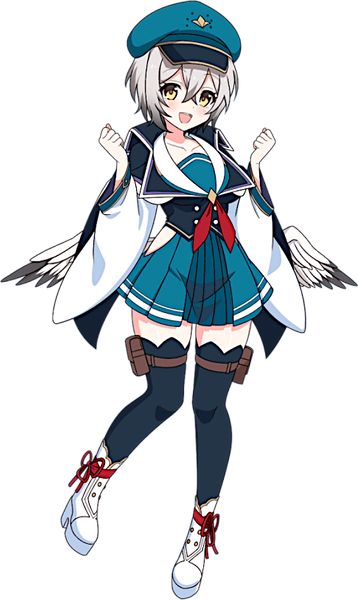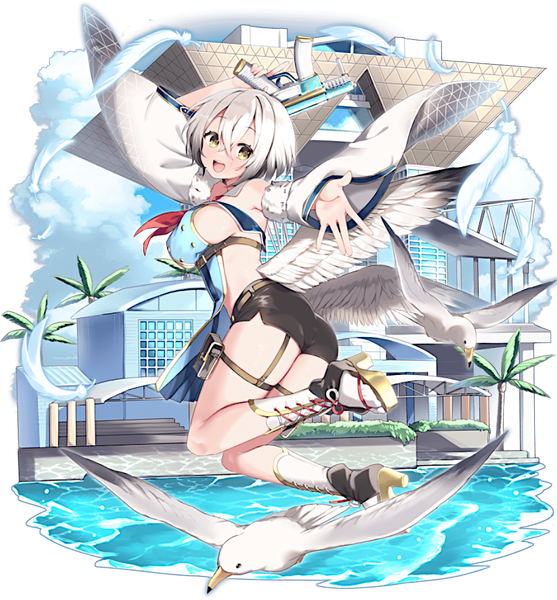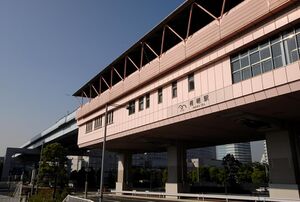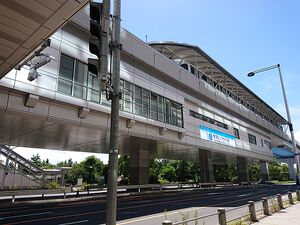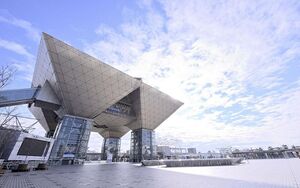Ariake
| Ariake | |||||
|---|---|---|---|---|---|
| Japanese Name | アリアケ | ||||
| Weapon | |||||
| Race | Beast | ||||
| Nationality | |||||
| Birthday | November 1 | ||||
| Constellation | Scorpio | ||||
| Talents | Simple Sunday work, Hemispheric sleep, Working all night | ||||
| Likes | People who are dedicated to their dreams, Timber | ||||
| Dislikes | Things that destroy dreams, Remnants of human life such as abandoned houses and villages | ||||
| Strengths | No back and forth | ||||
| Weaknesses | Reckless for the sake of the goal, Apathetic if the goal is not achieved | ||||
| Hobbies | Athletic tours, Woodwork | ||||
I'm Ariake from M. Nishiki. I've heard that the SSS is the best unit for clearing the Mist. I thank you from the bottom of my heart for inviting me to join you. Now, let's go and clear that disgusting Mist right now!
Layers
| Icon | Title | Release Date | Where to Obtain |
|---|---|---|---|
| [Chase Those Dreams With Those Wings] Ariake | 2024 June 7 | [Training Camp - Ariake] Event Reward | |
| [Straight Towards the Dream] Ariake | 2024 March 29 | Premium Gacha |
Owned Skills
Trivia
- Ariake's birthday is the opening date of Ariake Station (Tokyo) and Tokyo Big Sight Station in 1995.
- Ariake's beast motif is the seagull. The location of the real life station is next to Tokyo Bay, and the location itself has water buses and ferries for sea travel transfers. The train station symbols in Ariake have a seagull motif. Ariake station and Tokyo Big Sight station serve as the "wings" of the Tokyo Big Sight building.
- Ariake's weapon closely resembles the H&K MP5 submachine gun, used extensively by Japanese specialized police teams including the Imperial Guard. The blue and white coloring may refer to the Great Harumi Bridge in Kōtō ward where Ariake station is located, much of which is painted light blue.
- Ariake was originally scheduled to be released as early as the release of Mist Train Girls back in 2020, earlier in Comiket 99, that is hosted in Tokyo Big Sight, which was ultimately delayed to December 2021, and ran for only two days with entry limited to 55000 people per day by requiring ticket purchases. At the time, Gun weapon Layers are physical type, but Ariake's kit and stats are now modified.
- The building in the background of [Straight Towards the Dream] is Tokyo Big Sight (東京ビッグサイト), famous for hosting Comiket, the semiannual doujinshi convention in Tokyo, Japan.
Counterpart
Ariake Station (有明駅, Ariake-eki) is a railway station on the Yurikamome Line, in Kōtō, Tokyo, Japan. Its station number is U-12. Opened on 1 November 1995, the station is located within walking distance of Kokusai-tenjijō Station on the Rinkai Line. The station opened as the line's eastern terminus before the line's extension to Toyosu Station opened. However, some services from Shimbashi still terminate at Ariake. The station opened on 1 November 1995 as the eastern terminus of the Yurikamome Line. It became a through station from 27 March 2006 following the opening of the extension to Toyosu. Ariake station is an elevated station with two island platforms and three lines, with tracks shared by lines 2 and 3. There is also a night stay set up services for Ariake station.
The nearest bus stops are Kokusai-Tenjijo Station, Kokusai-Tenjijo and Kokusai-Tenjijo Station in the Kokusai-Tenjijo Station traffic square, and Kokusai-Tenjijo Station Entrance and Cancer Institute Ariake Hospital on the metropolitan road southeast of this station. In addition, limousine buses bound for Haneda Airport and Narita Airport arrive and depart from Tokyo Bay Ariake Washington Hotel.
Tokyo Big Sight Station (東京ビッグサイト駅, Tōkyō Biggu Saito-eki) is a station on the Yurikamome Line in Kōtō, Tokyo, Japan. It is numbered "U-11". The station opened on 1 November 1995, with the name Kokusai-tenjijō-seimon Station (国際展示場正門駅, Kokusai-tenjijō-seimon-eki, lit. “International Exhibition Center Main Entrance Station”). On 16 March 2019, it was renamed to its current name. As the station name suggests, it is the closest station to Tokyo Big Sight and is directly connected to the 2nd floor entrance plaza via a passageway, which is often crowded during events at Tokyo Big Sight.
The northern side of the station is lined with office buildings and hotels, and the Rinkai Line Kokusai-Tenjijo Station is also very close (although the neighbouring Ariake Station is closer for transfers). Tokyo Big Sight is notable for water buses, where the Ariake Passenger Boat Terminal is the boarding area. Water buses arrive and depart in the Tokyo Kanko Kisen and Tokyo Waterfront Lines. Wikipedia
Tokyo Big Sight (東京ビッグサイト, Tōkyō Biggu Saito), officially known as Tokyo International Exhibition Center (東京国際展示場, Tōkyō Kokusai Tenjijō), is a convention and exhibition center in Tokyo, Japan, and the largest one in the country. Opened in April 1996, the center is located in the Ariake Minami district of Tokyo Waterfront City (臨海副都心, Rinkai Fukutoshin) on the Tokyo Bay waterfront. Its most iconic feature is the visually distinctive Conference Tower. The name Tokyo Big Sight in Japanese eventually became the official name, and it also became the name of the operator in April 2003.
Located on the shore of Tokyo Bay, about 30 minutes by rail from Tokyo Station, Big Sight is Japan's largest international convention venue. Its most distinctive feature is the unique architecture of its 58 metres (190 ft) high eight-storey Conference Tower. The site utilizes steel frame with reinforced concrete construction, boasting a total floor area of 230,873 square metres (2,485,100 sq ft) which outsizes Makuhari Messe's floor space by half, and of which 35% is indoors. The convention center is divided into three main areas, each with their own restaurants and other supporting facilities: The East Exhibition Hall, the West Exhibition Hall and the Conference Tower.
The architectural element most associated with the Tokyo Big Sight name, the glass and titanium-panelled Conference Tower appears as a set of four inverted pyramids mounted upon large supports. The first floor comprises an 1,100-seat reception hall and four conference rooms of varying size. The second floor comprises the Entrance Plaza which is the main access area, the glass-roofed Event Plaza, the Entrance Hall which leads to the exhibition halls proper, and the Exhibition Plaza. There are no floors three through five due to the structure's above-ground stature. Floors six and seven can be directly accessed via escalator from the second-floor Entrance Hall, and comprise the main convention facilities of the Tower. The sixth floor houses ten conference rooms of small to medium size, some of which can be merged into larger spaces by removing intervening partitions. Floor seven houses the 1,000-seat International Conference Room as well as three conference rooms of much smaller size. Floor eight houses five conference rooms. Scattered around the Tower's vicinity are public art pieces, most of which are works by international artists such as Claes Oldenburg and his wife Coosje Van Bruggen, Michael Craig-Martin and Lee U-Fan. These include a giant sculpture of a saw, a large stylized pond and three marble beds. Wikipedia
Map
Gallery
- Pages using Tabber parser tag
- Pages using DynamicPageList3 parser tag
- Weapon Gun
- Beast
- Nishiki
- Scorpio
- Element Pierce
- Element Light
- Metro Train Knights
- Japan

